More than 60 drivers were recorded breaking red lights at several junctions in Dublin and Galway over the course of eight hours of covert filming by Prime Time.
During one morning rush hour, 13 motorists broke red lights in 30 minutes at the junction of the N11 and Newtownpark Avenue in Stillorgan, Co Dublin.
On another evening in Co Galway, 20 motorists flouted the red lights at the busy junction of Bóthar na dTreabh and the Ballybrit Road within a 50-minute period.
These red-light violations are part of a broader trend reflecting a "shocking" decline in driver behaviour according to road safety campaigners, transport operators and elected representatives that spoke to Prime Time.
"Driver behaviour is absolutely shocking at the moment. I don't know what the mentality of the Irish driver is, but they just don't seem to give a damn about anybody else only themselves," said Leo Lieghio, whose daughter Marsia was killed in a hit-and-run at a pedestrian crossing on 16 October 2005.
Mr Lieghio is also vice president of the Irish Road Victims' Association (IRVA), which supports those bereaved or injured in road collisions.

Professor Pete Lunn, head of the Economic and Social Research Institute's (ESRI) Behavioural Research Unit, agreed saying distracted driving was a big part of the problem.
"Driving on Irish roads has got worse and distracted driving has increased, particularly due to mobile phone use. It's not good news for safety on Irish roads. It looks like the quality of driving is getting worse," Prof Lunn said.
Covert filming
Prime Time set up cameras to covertly film drivers at junctions in Dublin and Galway over four days to document the risky behaviour first-hand.
Most offenders caught on camera appeared to break the lights during the morning and evening rush hours when traffic is at its worst.
In a short 15-minute period on Harold’s Cross bridge along the Grand Canal on the south side of Dublin, six people were observed breaking red lights.
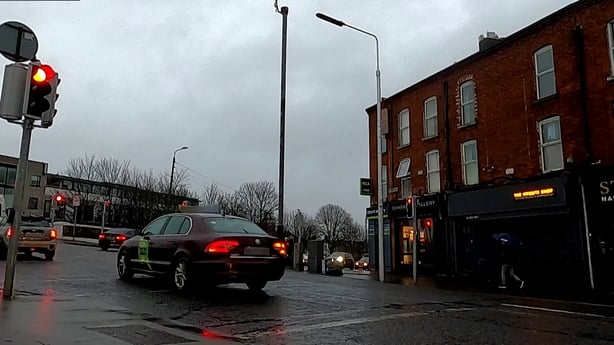
At the nearby junction of the Crumlin Road and the canal, cars, cyclists and scooters were all seen running the red lights.
The N11 is the main artery from Dublin city centre towards Wexford. When Prime Time set up covert cameras at the junction of the N11 and the Newtownpark Avenue in Stillorgan, 13 motorists broke red lights in 30 minutes.
This was just one of the junctions where three consecutive vehicles were observed breaking the same red light.

'Frustration’
So, why are so many motorists running red lights?
Congestion and traffic are major factors, according to Prof Lunn.
"Overwhelmingly, the biggest problem we have is the amount of congestion and traffic on Irish roads. We're going to have to get that down because that's one of the reasons why people are so frustrated to make bad decisions while driving," Prof Lunn said.
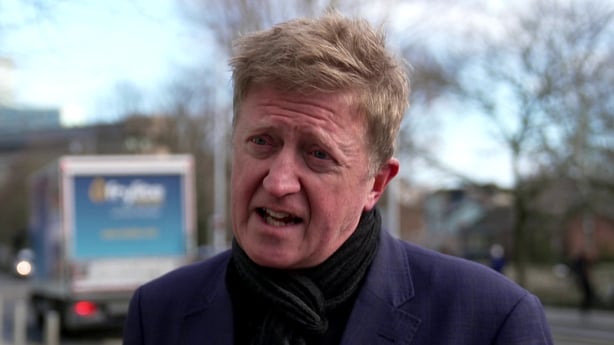
Statistics from the Central Statistics Office (CSO) show the population of vehicles on Irish roads has soared from 1.6 million in 2000 to 2.9 million in 2023, the latest year statistics are available for.
There are now more vehicles on Irish roads than there was at the height of the Celtic Tiger.
Similarly, with the exception of a dip during the Covid-19 pandemic, the CSO says the total number of kilometres travelled by Irish motorists rose from 30 billion in 2000 to over 47 billion in 2023.
Nationwide problem
When Prime Time carried out covert filming near the University of Galway, at the junction of Newcastle Road and the N6, 14 motorists - including cars with 'N' and 'L' plates - ran red lights within 20 minutes one evening.
Just as Prime Time filmed an interview with Galway City councillor Níall McNelis beside Fr Griffin Road, near Salthill, cars could be seen breaking the red light in the background.

Between 7.50am and 9.10am, at the junction of Fr Griffin Road and Fr Griffin Avenue, Prime Time observed 14 cars running red lights.
Councillor McNelis said the numbers of motorists breaking red lights is so bad that "it's not safe anymore. We've seen the amount of pedestrians that actually had near misses in the city."
In the capital, Dublin City Council has said the increased prevalence of motorists flouting the red lights has become a "scourge" and there are plans in place to introduce automated red-light cameras to tackle the issue.
The cameras which were used on a six-month trial basis in the capital in 2015, will use automatic number plate recognition technology to identify offending drivers and automatically issue fines.
While Cllr McNeils says he wants resources like these to be rolled out nationwide, he also believes more needs to be done in terms of driver education as well.
"If it’s going to be rolled out in Dublin, it needs to be rolled out in the rest of the country too. But I do believe that we need to teach people how to use a traffic-light junction, how to use a roundabout, and how to use a yellow box again," Cllr McNeils said.
'Danger for our drivers'
Support for any measure to address the red-light breaking has also been endorsed by the likes of Luas operator Transdev whose drivers regularly encounter near misses and collisions.
While filming in Dublin's north inner city, five cars and three cyclists ran red lights at the Queen Street Luas junction in Smithfield during a 15-minute period.
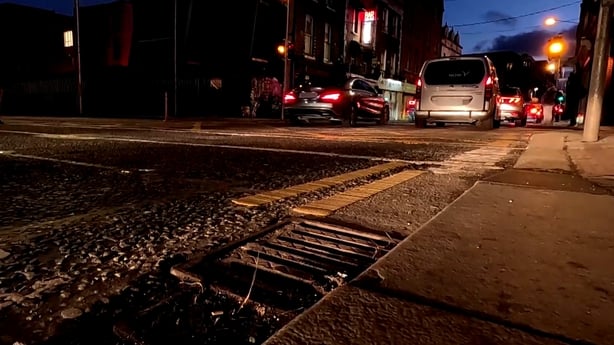
Dublin Bus drivers encounter similar issues of poor driver behaviour on a regular basis.
On any given day, Dublin Bus has over 1,000 buses on the capital’s roads.
The company's CEO, Billy Hann, says his drivers report traffic violations including the running of red lights which he says, "creates danger for our drivers, our customers, other road users, and in particular, pedestrians."
Dublin Bus says it strongly supports any initiative from the National Transport Authority (NTA) and Dublin City Council to introduce red light cameras.
Mr Hann also wants action taken to eliminate motorists driving illegally in bus lanes, another factor that they say makes conditions dangerous for drivers.
"We would prefer to see the bus lanes go to 24 hours a day rather than having various prohibitions on certain periods of day. It just cuts out any confusion for the driver themselves. It makes it much simpler for the driver and much better for Dublin Bus," Mr Hann added.
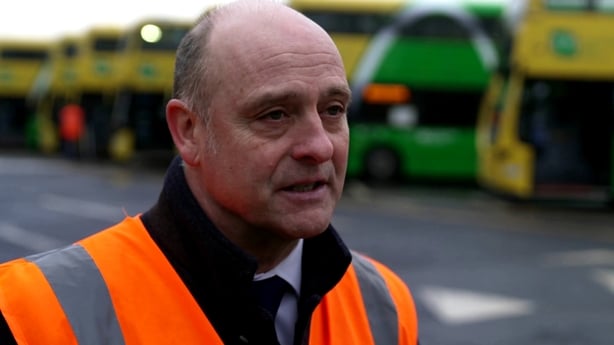
'Felt like someone punched me'
It's clear motorists who run red lights create a significant risk to the public and Mr Lieghio knows that better than most.
His 16-year-old daughter Marsia was knocked down as she crossed the road at a pedestrian crossing in Clondalkin, Co Dublin 20 years ago.
Walking home from a party with some friends, Marsia was struck by a car. The driver broke the red light as Marsia was crossing at a pedestrian crossing.
"The gardaí said she was about a yard from the footpath before she was hit by a car and the driver drove off in the direction of Lucan, " Mr Lieghio told Prime Time.
Marsia was rushed to hospital and placed in an induced coma.
"Seeing your 16-year-old daughter in the ICU with all those wires and tubes. It’s like something out of outer space. It's just so scary," Mr Lieghio added.
Marsia sadly died in Beaumont Hospital after fighting for her life for a week.
When the doctors told Leo that Marsia was gone, he said "it felt like someone punched me in the stomach, had their hand inside me and they were ripping out my insides."
The female driver responsible for Marsia's death was sentenced to ten months in jail for careless driving.
She had previous convictions and was serving a driving ban from the previous year for drink-driving when she struck Marsia and drove off.
International response
While the cameras to deter this type of behaviour have yet to be rolled out in Ireland, certain states in Australia have had them as far back as 1983.
"We first got red light cameras in Victoria and they've been progressively introduced throughout the country. A lot of the cameras that we have now actually combine red lights and speed," said Dr Ingrid Johnston, the CEO of the Australasian College of Road Safety.
The cameras have had the desired impact according to Dr Johnston, who said they have reduced the types of crashes most-closely linked to red light breaking.
"When somebody runs through the red light, you tend to get side-on or T-bone crashes, where the traffic running in the other direction has already got their green. Those crashes tend to have very severe injury outcomes. So, the red-light cameras are very effective at reducing those crashes," Dr Johnston said.
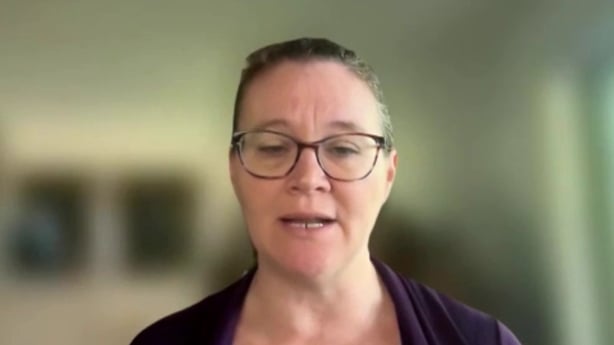
The eventual introduction of similar technology in Ireland can help address the issue, with Prof Lunn saying financial penalties do have a role in deterring people from breaking red lights, but he also believes that voluntary compliance remains vital.
"You can't have enforcement everywhere. Most driving, most abiding by the rules of the road is voluntary. People do it because they think they should, because they know that we can't all be breaking those rules or it becomes unliveable, it becomes too dangerous," Prof Lunn said.
"It's a collective responsibility. We all need to follow the rules of the road because we're all better off if we do. That means that we've got to punish those people who are essentially the selfish queue jumpers," he added.
Mr Lieghio agrees, saying the level of red-light breaking is "madness" and that people need to slow down for the safety of others.
"Everybody's in a hurry. Even a few seconds at a traffic light, they can't even wait for that there, which is madness. I just don't get it. For God's sake, you're not going to be stuck in a traffic light for hours. It's only seconds away. Why not just slow down?"
Reporter Conor McMorrow and producer Lucinda Glynn’s report on red-light breaking broadcasts on the 25 February edition of Prime Time on RTÉ One and RTÉ Player.




